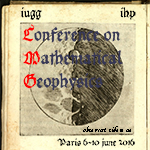Conveners:
Einat Aharonov (Hebrew Univ. Jerusalem)
Jean Sulem (Laboratoire Navier, Ecole des Ponts ParisTech, France)
Solicited Speaker: James Rice, Harvard University
Keywords: Friction rheology, Multiphysics couplings, Seismic cycle, Brittle and ductile deformations, Mechanical instabilities, Strain localization.
In the last thirty years, the study of earthquake mechanisms has emphasized the major role of multiphysics phenomena in the nucleation and propagation of seismic rupture. Field observations, laboratory experiments and recent advances in theory and modeling have highlighted the richness and importance of coupled physico-chemical processes involved in the weakening of the frictional resistance of faults. Considering that the frictional heat generated during an earthquake is the largest part of the total seismic energy budget, it is clear that thermally induced weakening mechanisms are of prime importance. Thermal effects may alter rock properties, as well as influence rock interactions with pore fluids. Thermo-poro-mechanical couplings due to shear heating include (but are not limited to) pore-fluid pressurization, chemical effects such as dehydration of minerals, decomposition of carbonates, onset of super-plasticity, and flash melting. In addition to thermal effects, other multi-physics couplings such as those arising from the relation between friction and fracture, the role of granular flow in faulting, and combined plastic-brittle deformation in fault zones, have been recently highlighted.
In this session, new advances in the understanding of the role of multiphysics couplings on the seismic cycle will be discussed in relation with recent field observations, innovative laboratory experiments, and advanced theoretical and numerical modelling.


